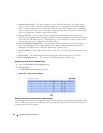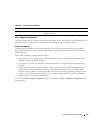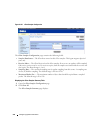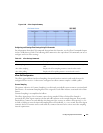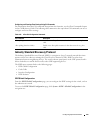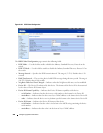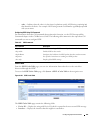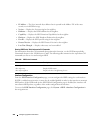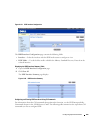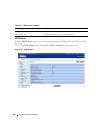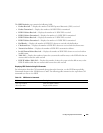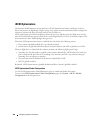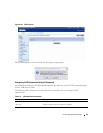
282 Configuring System Information
•
IP Address
— The (first) network-layer address that is reported in the Address TLV of the most
recently received ISDP message.
•
Version
— Displays the Version string for the neighbor.
•
Holdtime
— Displays the ISDP holdtime for the neighbor.
•
Capability
— Displays the ISDP Functional Capabilities for the neighbor.
•
Platform
— Displays the ISDP Hardware Platform for the neighbor.
•
Port ID
— Displays the ISDP port ID string for the neighbor.
•
Protocol Version
— Displays the ISDP Protocol Version for the neighbor.
•
Last Time Changed
— Displays when entry was last modified.
Viewing ISDP Cache Table Information CLI Commands
For information about the CLI commands that perform this function, see the CDP Interoperability
Commands chapter in the
CLI Reference Guide
. The following table summarizes the equivalent CLI
commands you use to view and configure ISDP.
Interface Configuration
From the ISDP Interface Configuration page, you can configure the ISDP settings for each interface.
If ISDP is enabled on an interface, it must also be enabled globally in order for the interface to transmit
ISDP packets. If the ISDP mode on the ISDP Global Configuration page is disabled, the interface will
not transmit ISDP packets, regardless of the mode configured on the interface.
To access the ISDP Interface Configuration page, click System
→
ISDP
→
Interface Configuration in
the navigation tree.
Table 6-68. ISDP Cache Commands
CLI Command Description
clear isdp table Clears entries in the ISDP table.
show isdp entry Displays ISDP entries.
show isdp neighbors Displays the list of neighboring devices.



